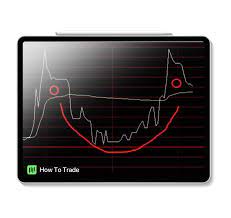In the world of online trading, Forex charts are like the map that guides traders through the turbulent waters of the foreign exchange market. Understanding these charts is the key to making informed trading decisions. This comprehensive guide will decode the intricacies of Forex charts and unveil the invaluable insights they hold. By the end of this article, you’ll have a profound understanding of how to read between the lines of Forex charts to make strategic moves in the market.
The Basics of Forex Charts
Forex charts are visual representations of the price movements of currency pairs over time. They are essential tools for traders as they offer a historical perspective on price fluctuations. To interpret these charts effectively, let’s break down the key components:
1. Types of Forex Charts
There are three main types of Forex charts:
a. Line Charts
Line charts are the simplest form. They connect closing prices over a specified period to create a line. They provide a basic overview of the price trend.
b. Bar Charts
Bar charts, also known as OHLC (Open, High, Low, Close) charts, display the open, high, low, and close prices for each period. They offer more detailed information than line charts.
c. Candlestick Charts
Candlestick charts are widely used in Forex trading. They visually represent price movements using candlestick patterns. These patterns can reveal market sentiment and potential reversals.
2. Timeframes
Forex charts can be displayed in various timeframes, such as minutes, hours, days, weeks, or months. Shorter timeframes show more granular data, while longer timeframes offer broader insights.
Analyzing Forex Charts
Now that you’re familiar with the basics, let’s delve into the art of interpreting Forex charts:
3. Identifying Trends
Trends are the cornerstone of technical analysis. They can be categorized into three types:
a. Uptrend
An uptrend is characterized by higher highs and higher lows. Traders look for buying opportunities during uptrends.
b. Downtrend
A downtrend features lower highs and lower lows. It signals a bearish market, prompting traders to consider selling positions.
c. Sideways Trend
A sideways trend, also known as a range-bound market, shows no clear upward or downward direction. It’s essential to exercise caution and adapt to changing market conditions during sideways trends.
4. Support and Resistance
Support and resistance levels are key price points where traders expect price reversals. Support is a price level where a currency pair tends to find buying interest, preventing it from falling further. Resistance, on the other hand, is the price level where selling pressure tends to emerge.
5. Trading Indicators
Traders use various technical indicators like Moving Averages, Relative Strength Index (RSI), and Stochastic Oscillator to analyze charts further. These indicators provide valuable insights into overbought or oversold conditions and potential trend reversals.
Reading Candlestick Patterns
Candlestick patterns are a powerful tool in the Forex trader’s arsenal. Here are a few common patterns and what they signify:
6. Doji
A Doji candlestick signals indecision in the market. It occurs when the opening and closing prices are nearly the same.
7. Hammer
The Hammer pattern appears after a downtrend and signals a potential reversal. It has a small body and a long lower shadow.
8. Shooting Star
A Shooting Star pattern forms after an uptrend and suggests a potential reversal. It has a small body and a long upper shadow.
9. Engulfing
An Engulfing pattern occurs when a smaller candle is completely engulfed by a larger one. It indicates a strong shift in market sentiment.
Making Informed Trading Decisions
By understanding Forex charts, you’re better equipped to make informed trading decisions. Remember that while charts provide valuable insights, they’re not the sole determinant of market direction. Successful trading combines technical analysis with a comprehensive understanding of market fundamentals and risk management.


